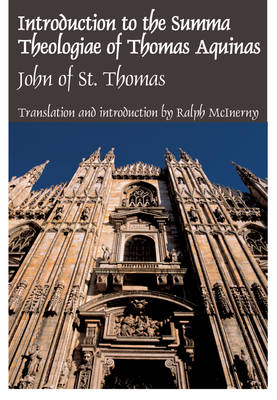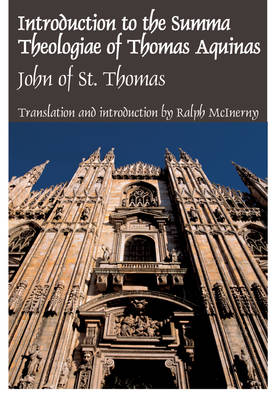
- Afhalen na 1 uur in een winkel met voorraad
- Gratis thuislevering in België vanaf € 30
- Ruim aanbod met 7 miljoen producten
- Afhalen na 1 uur in een winkel met voorraad
- Gratis thuislevering in België vanaf € 30
- Ruim aanbod met 7 miljoen producten
Zoeken
Intro Summa Theologiae Thomas Aquinas
John of St. Thomas
John Of St Thomas, John Poinsot
Hardcover | Engels
€ 29,95
+ 59 punten
Omschrijving
John of St. Thomas (John Poinsot) lived from 1584 to 1644 and was one of the luminaries of the Second Scholasticism, which flourished on the Iberian Peninsula at a time when, on the continent, Thomism was virtually eclipsed. In his Cursus Philosophicus, John of St. Thomas provides a remarkable precis of the philosophy that is presupposed by theology. His Cursus Theologicus is a commentary on the Summa Theologiae in the manner of the Master's exposition of the Sentences of Peter Lombard, that is, the pursuit of the main questions raised by the text rather than a textual commentary. Included in modern editions of the Cursus Theologicus are a number of preliminary studies, among them a remarkable analysis of the Summa, part by part, treatise by treatise, in which the exquisite architecture of this masterpiece of Thomas Aquinas is magisterially displayed. This may be read as the explicatio textus, essential for reading the Cursus Theologicus. Readers of Jacques and Raissa Maritain are aware of the central role John of St. Thomas played in their grasp of Aquinas. Indeed, this was true of most of those involved in the Thomistic Revival inaugurated by Leo XIII. This translation of John of St. Thomas's Introduction as it appears in the Solesmes edition makes available to a new generation of students of Thomas a precious handbook and guide to the Summa.
Specificaties
Betrokkenen
- Auteur(s):
- Uitgeverij:
Inhoud
- Aantal bladzijden:
- 224
- Taal:
- Engels
Eigenschappen
- Productcode (EAN):
- 9781890318703
- Verschijningsdatum:
- 4/10/2004
- Uitvoering:
- Hardcover
- Formaat:
- Genaaid
- Afmetingen:
- 152 mm x 229 mm
- Gewicht:
- 408 g

Alleen bij Standaard Boekhandel
+ 59 punten op je klantenkaart van Standaard Boekhandel
Beoordelingen
We publiceren alleen reviews die voldoen aan de voorwaarden voor reviews. Bekijk onze voorwaarden voor reviews.











